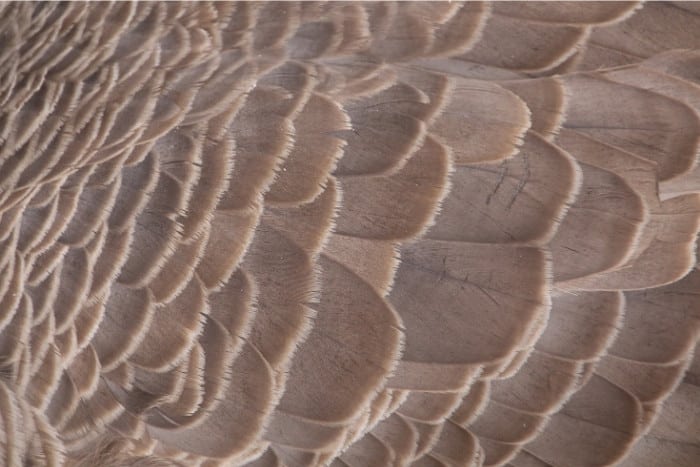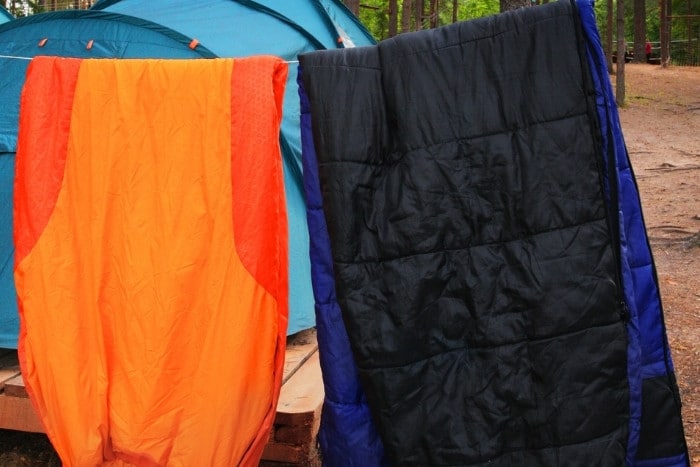Perhaps you’re considering buying a down sleeping bag, but you want to clear a few things up first. It’s long been debated if sleeping bags lose their insulation when they are compressed, and we put this debate to rest by giving you all the up-to-date information and answering is it okay to compress down sleeping bags?
If you are compressing a down sleeping bag for a short period (up to a day), then it generally will not lose its loft. However, if you are storing it for a long period then it can damage the insulation and its effectiveness. Overall, these sleeping bags should not be compressed unless unavoidable.
Before we dive in, it’s vital to be clear about why down sleeping bags are so warm in the first place. We then give you an in-depth look at what compressing these sleeping bags will do. To finish, we give you 8 ways to take care of your sleeping bag.
What Makes a Down Sleeping Bag Warm?
A down sleeping bag is arguably the warmest sleeping bag you can choose to take camping.
It has the highest warmth-to-weight ratio, but it also has cozy plumage, high resilience, the ability to be waterproof, and is highly compressible.
Understanding what makes a down sleeping bag warm is vital because this impacts its compressible capabilities.
1. Plumage
Down is light plumage that can be found beneath the feathers of a duck or goose.
It has extremely insulating properties, with one plume containing ultra-fine fibers that develop from its center with smaller strands branching off.
These interconnecting branches create pockets of air that trap the heat from your body to keep you warm.

2. Resilience
Down sleeping bags are expected to last you 810 years or more. The fabric used to make down sleeping bags is remarkably resilient and can be stuffed or re-stuffed, keeping their cozy warming capabilities.
3. Dry Down
Dry Down is water-resistant technology that helps a down sleeping bag to retain its loft when it gets wet.
Usually, when a down sleeping bag is wet, it loses its warmth capabilities, but with Dry Down, it can maintain these to a degree.
4. Compressible
Down sleeping bags are incredibly compressible compared to synthetic sleeping bags. It is excellent for a backpack because it can be extremely compact within a hiking bag.
More space means more layers for warmth!
Is It Okay to Compress Down Sleeping Bag?
It is highly debated if compressing a down sleeping bag is okay. Compressing a sleeping bag can impact how much insulation it can provide.
Here we give you expert advice on if compressing a down sleeping bag is okay for the short or long-term.
In the Short Term
If you are compressing your sleeping bag during a trip, you’ll likely only compress it for a day at a time. Generally, this is okay.
If you plan to air your down sleeping bag the morning after use, it is unlikely that it will lose much loft.
In the Long Term
In the long term, if you are storing the sleeping bag and compressing it when it’s being stored, then this will have long-term effects on the bag’s warmth.
Compressing the bag means the fibers collapse, and the bag loses the air gaps it usually uses to create efficient insulation.
Our Verdict?
If you are going to compress your sleeping bag, make sure it is only for a small amount of time. It can be unavoidable to compress it when you’re on a hiking trip.
Once you have finished your trip, the best way to store your down sleeping bag is to hang it somewhere cool and dry.
How to Look After Your Down Sleeping Bag
As well as not compressing it, there are other ways to look after your down sleeping bag. Below we give you 8 ways to take care of your down sleeping bag and make it last longer!
1. Make Sure It’s Dry When Stored
If your bag is slightly wet or is hanging in a humid location, it can lose its insulation.
Even in humid air, the slightest bit of water can cause feathers inside the bag to start clumping, reducing the warmth it can provide.
2. Avoid Washing It Often
If you’re going to wash it, don’t make it a regular thing. When you do wash it, be sure to fluff up the feathers throughout the washing process.
The loft can clump with water, which will affect its overall insulation, so fluffing can loosen the clumps and provide overall warmth coverage.

3. Dry Accordingly
You can choose to either dry the bag in a tumble dryer. If you use tennis or washing balls, you can be sure the feathers won’t clump.
If a tumble dryer is unavailable, then you can lay the sleeping bag flat to dry but be sure to beat it repeatedly during the drying process.
4. Repair Holes and Feather Loss
If your bag has holes or has experienced some feather loss through them, fix it!
It’s important to repair these as quickly as possible, you are not only losing loft with holes, but the holes are creating bigger air pockets which will make you colder.
5. Air Your Bag When You Wake Up
After using your down sleeping bag, it’s good practice to air it out. If you have camped with it the night, the bag has likely collected some sweat by morning.
For the bag to be as insulating as possible, air it out to remove as much moisture from it as possible.
6. Look After Your Zippers
There are two zippers for a reason, and to get the most out of your down sleeping bag, make sure you use both.
Over-use of one zipper will see it wear down faster. It’s also good practice to keep your zippers clean as this will avoid damage.
7. Replenish the Water Repellent Treatment
Sleeping bags are not waterproof. However, you can apply water repellent treatment which uses a hydrophobic coating to bind with the fibers and make them as water resistant as possible.
While your down sleeping bag may already come with this treatment, it is important to replenish it. This will keep your bag working as efficiently as possible.
8. Keep Away From Damp Areas
If you plan to hang your sleeping bag in a cupboard at home, make sure it is not damp. If you plan to store your sleeping bag in a damp tent, ensure it is dry.
Damp will clump the feathers and ruin the bag’s warmth.
Final Thoughts
Down sleeping bags are a piece of fantastic equipment for any cold weather camper.
We hope that this article made it clear that compressing your down sleeping bag on hiking trips can be unavoidable, just make sure you air it out afterward.
If you’re storing your bag at home, hang it up to ensure it doesn’t lose any precious loft! Look after your sleeping bag, which will keep you warm for decades.
